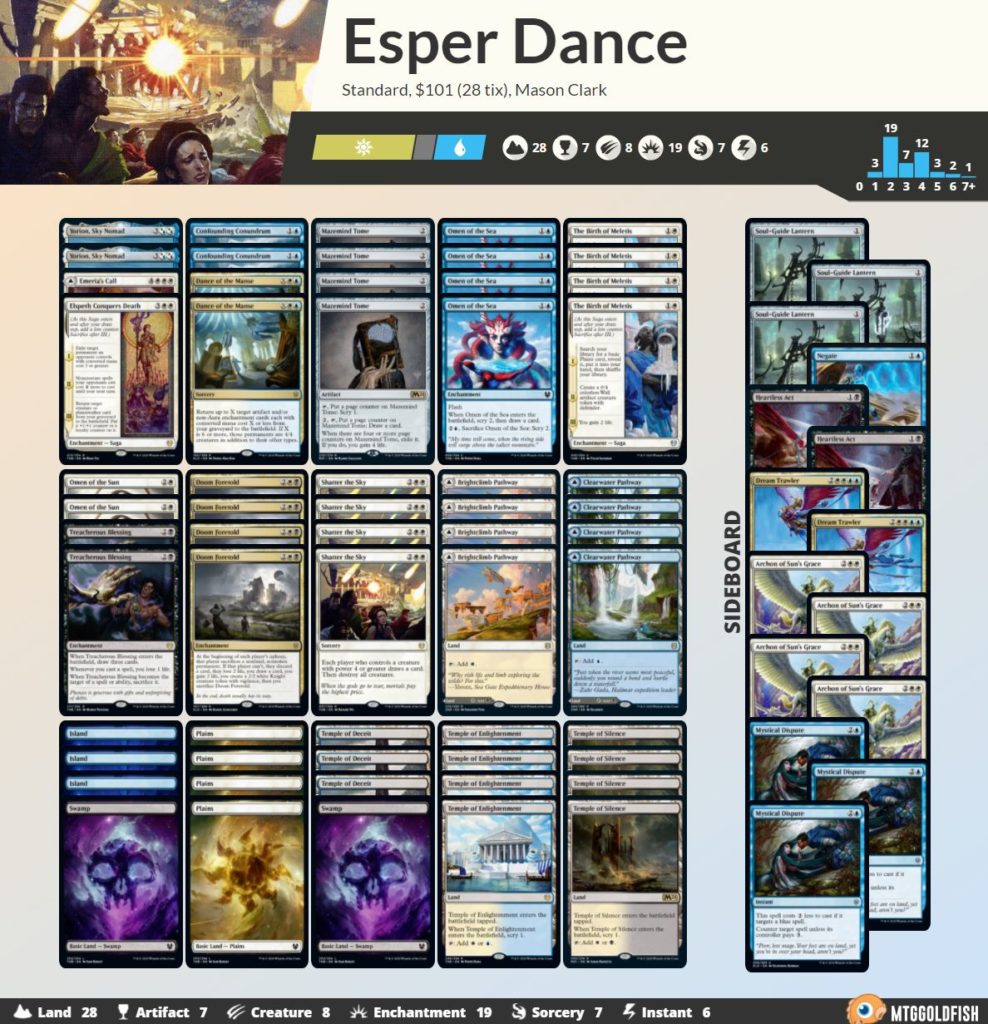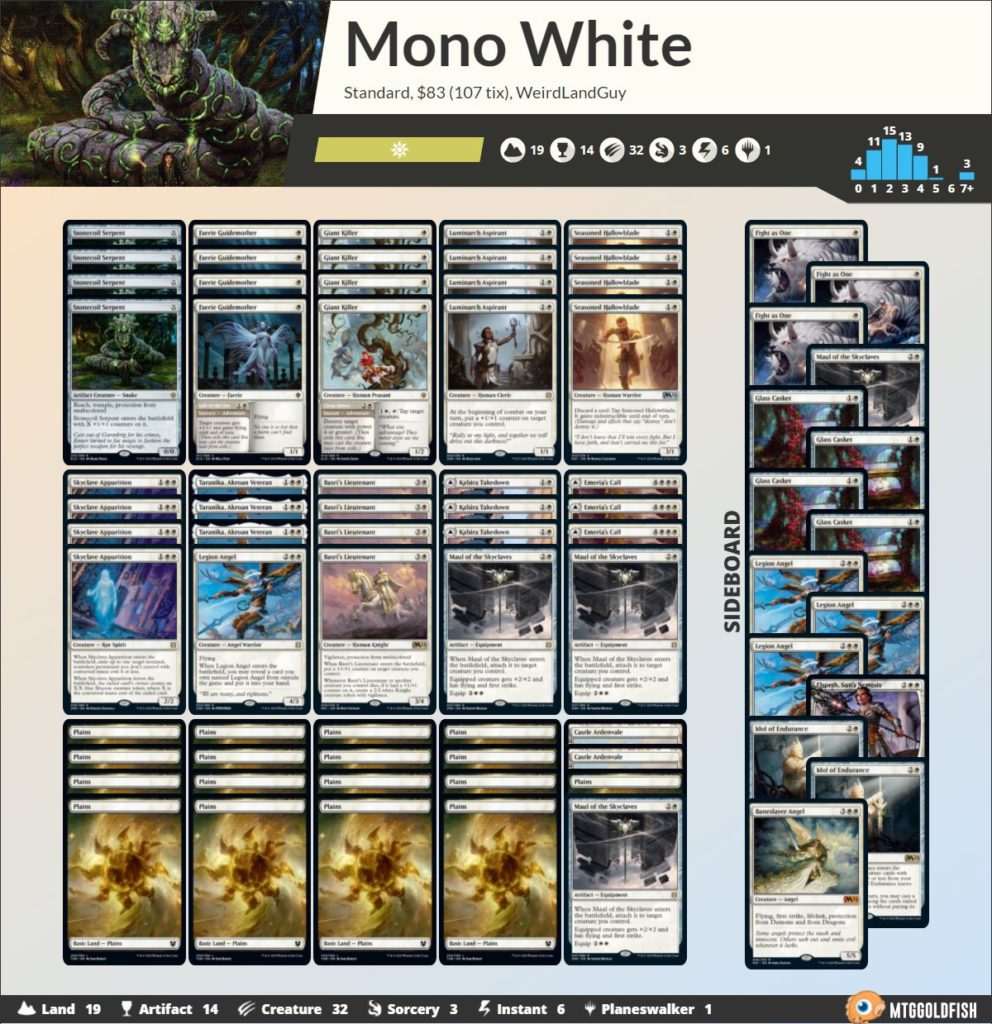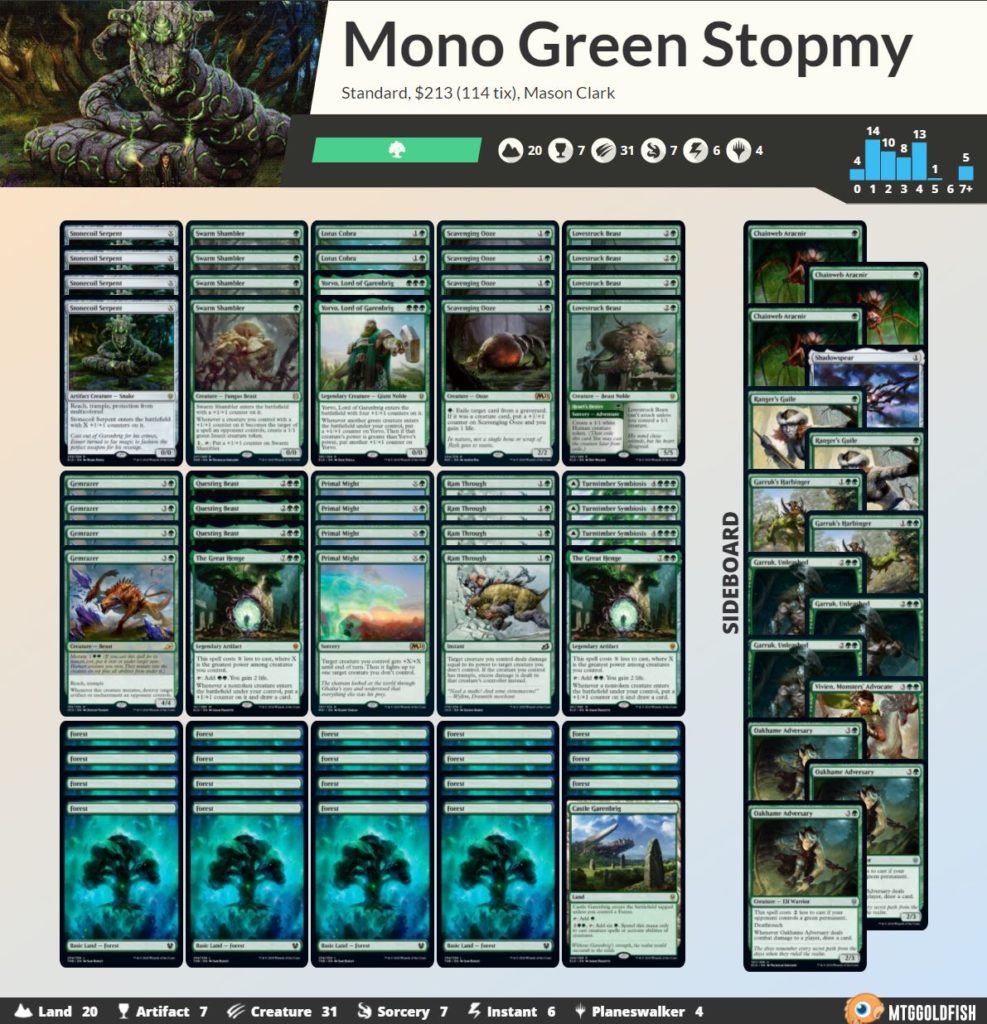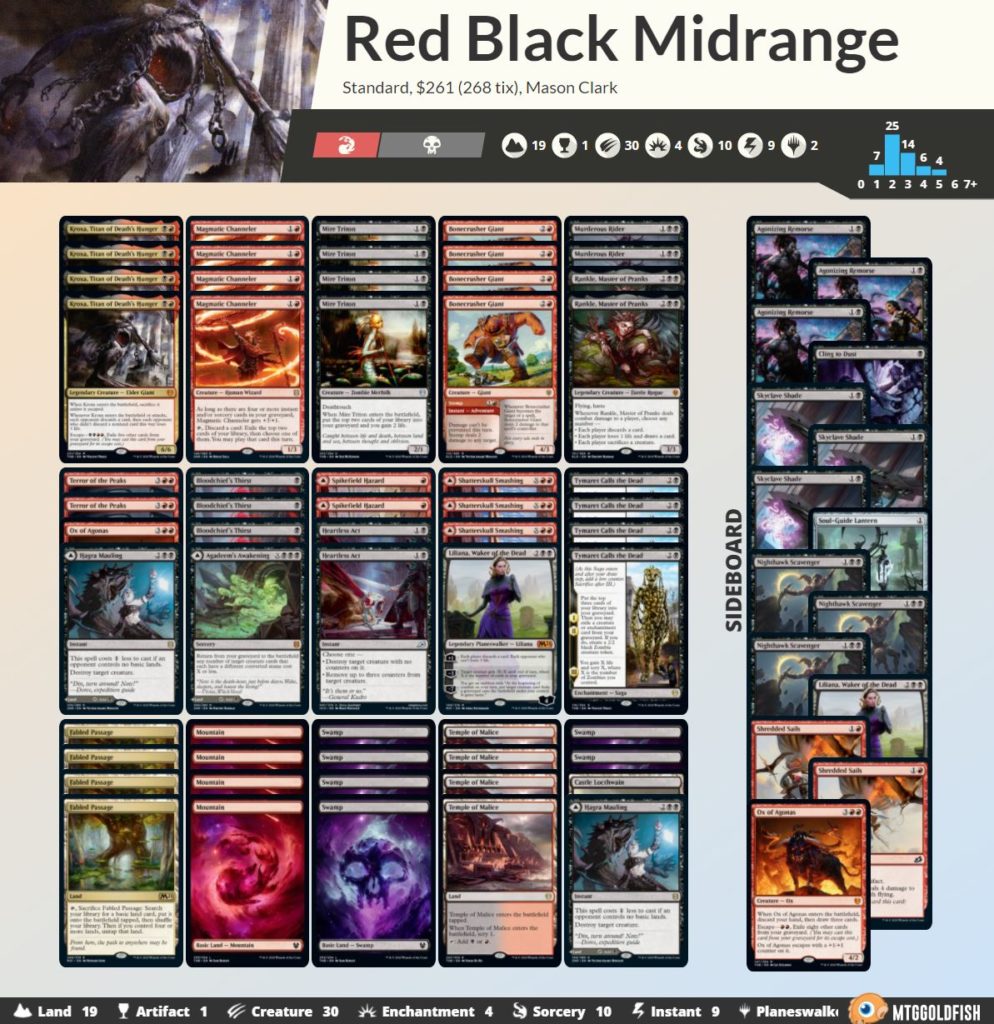Welcome to our third week of “Week One” Standard. (Third time’s the charm, right?) Today, I’m going to share some decks you could be playing on the Arena ladder this weekend — but first, I wanted to briefly talk about the bans themselves.
I think we can all agree that Omnath needed to get banned. I also think the Lucky Clover ban is good; Adventures has gone from dark horse to top dog in Standard recently, and I think it could have very easily pushed lots of decks out of the format.
Escape to the Wilds is an interesting case study, though. Escape has only really been a role player in Omnath Ramp and Adventures decks. With those two decks leaving Standard, why would we need to answer Escape?
I suspect Wizards preemptively banned Escape having learned some valuable lessons from Omnath Ramp. One reason why beating Omnath Ramp was so hard was because the deck had two different “draw five” cards, which made it incredibly hard to run them out of resources. If you have data that might suggest ramp will be too good again — or advance knowledge of future sets — I like banning the card. Players often claim that WOTC doesn’t using their data enough or learn from past lessons, and this ban shows that the opposite is true.
Okay, now that Mason’s Ban Philosophy Corner is out of the way, let’s hop into the new format!
Esper Dance

Buy this deck from Card Kingdom
Export this deck to Arena via MTGGoldfish
Esper Dance is a deck I started playing again in the last week before the bans. You had a challenging time against Adventures if they got too far ahead, but you were able to grind them to a pulp if you could control the Clovers. Now, with Clover gone, this deck is poised to make some big waves!
Esper Dance has some major advantages in the current metagame. All the other decks have a hard time interacting with your game plan in game one, and in the post-board games, you get to juke them with Archon of Sun’s Grace. A lot of decks play to the battlefield, and Esper Dance is great at exploiting that. Here’s a common play pattern: you play some early enchantment, and your opponent plays a threat. You slam your Doom Foretold and answer their play, which disincentivizes them from committing to the board. This will typically buy you a turn, which will allow you to build up to a big Dance of the Manse.
The biggest downside to Esper Dance is that it can be very slow. If the format trends toward low-to-the-ground aggro decks, you could have a harder time — but for right now, I really love this deck.
Mono-White

Buy this deck from Card Kingdom
Export this deck to Arena via MTGGoldfish
White Weenie is the kind of deck that preys on the Dance deck. Your plan is to flood the board with low-cost creatures, then get over the finish line with cards like Maul of the Skyclaves. Maul turns any of your creatures into game enders; it doesn’t hit as hard as Embercleave, but it’s much easier to cast on stalled boards.
This deck also gets to play Skyclave Apparition, which is turning out to be an eternal all-star. Apparition will answer almost all the threats your opponents will play, and it gives you a removal spell you can use while still playing to the board.
Mono-White also gets to play Luminarch Aspirant, which is a slow but powerful card. If you’re on the play and you slam this on turn two after playing a one-drop on turn one, your win rate will skyrocket. Its ability to spread power across multiple creatures will make it a lightning rod, but any opponent who deals with it will still have to contend with the rest of your board.
It may turn out that other aggressive decks are stronger than Mono-White, thanks to cards like Embercleave or Questing Beast, but I think this Mono-White deck has enough answers that it can be a contender.
Mono-Green

Buy this deck from Card Kingdom
Export this deck to Arena via MTGGoldfish
On the topic of Questing Beast decks, I wanted to talk about Mono-Green Stompy again this week. Mono-Green is a deck that typically gets put down as “not good enough” or “just a bunch of dumb creatures” — but despite those claims, I think there’s really something to this deck.
Most cards in Mono-Green are very powerful on their own, and they combine well with your removal. Ram Through and Primal Might allow you to swing races and have a good amount of interaction for the board — something Mono-Green normally lacks. The combination of threat density, redundancy at different spots on the curve, and access to mana sinks makes this one of the most efficient mono-green decks I’ve ever seen. Losing Pelt Collector with rotation hurts, but the rest of the deck is still quite strong.
The biggest drawback to playing Mono-Green is its poor match-up against Red-Black (which we’ll get to later), but the rest of the deck’s match-ups are good or even. The best part of playing decks like Mono-Green is that even bad match-ups are winnable thanks to your proactive game plan.
Blue-Black Rogues

Buy this deck from Card Kingdom
Export this deck to Arena via MTGGoldfish
Rogues is another deck that I’ve alluded to in past articles, and it still hasn’t had its time in the sun. We saw Seth Manfield play a more controlling build of the deck to a Top 8 finish at the Grand Finals, but the build I’m promoting today tries to get on the battlefield quickly and disrupt your opponents’ biggest plays.
Your primary disruption spells are four copies each of Drown in the Loch and Lofty Denial. While your opponent is developing their board, you can counter their most impactful cards while chipping away. Cards like Nighthawk Scavenger win almost all the aggressive match-ups while also forcing our opponents to end the game quickly.
My main reason for playing this build over Seth’s is that the metagame is still shaping up. Control decks are at their best when the metagame is solidified and you can ensure your cards will line up effectively. Given how fresh the meta is, having more proactive draws is a big get, but expect your Rogues deck to change fairly frequently, as the metagame will (hopefully) be shifting a lot these next few days.
Rogues is a classic tempo deck, where your play skill and that of your opponents will have a greater influence on the outcome of the match than the cards themselves. If you want to play Rogues, get ready for a lot of challenging games.
Red-Black Kroxa

Buy this deck from Card Kingdom
Export this deck to Arena via MTGGoldfish
Kroxa constantly gets made fun of because it isn’t as powerful as Uro. It’s truly the greatest example of an amazing card getting overshadowed because it’s not quite as good as another. While Kroxa is no Uro, that’s totally okay, because a slightly worse Uro is still incredible.
This deck looks to run the opponent out of resources and eventually cross the finish line with some large bodies. While Kroxa is the best example of this, the deck also plays Magmatic Channeler to churn through cards and eventually turn into a threat that ends the game quickly.
This is also a deck that makes great use of double-faced lands. Your actual land count is low (just nineteen), which is doable in a deck that only wants 4-6 mana sources in play, especially when eight of your spells can be played as lands. This will allow you to have plenty of resources left in games where your opponents are flooding out.
This deck does struggle with cards like Cling to Dust and Soul-Guide Lantern — and its raw power makes those cards playable — but it has a few ways to blank these cards. For starters, you have a couple copies of Terror of the Peaks as late-game plays that sidestep all the graveyard shenanigans. You also have Rankle and Bonecrusher Giant to play to the board and punish any opponent who tries to play on the wrong axis.
Red-Black Kroxa looks to be a serious contender for this format, and I have my eyes on it as the deck to beat in week one. That might change in time, but right now, it’s the most well-rounded deck we have.
Third Time’s the Charm
I’ve been playing Standard for the past three days, and it’s looking to be a really healthy format. Now is the time to get in the trenches and play some games! Midrange, aggro, tempo and control are all represented on the ladder, so find the deck you like and dive in!
Have a deck you’re loving? Tweet it at @masoneclark and @card_kingdom so we can get in on the fun!

Mason Clark is a grinder in every corner of the game who has played at the pro level and on the SCG Tour with Team Nova. Whether he’s competing in Standard, Historic or Modern, Mason plays with one goal in mind: to be a better player than he was the day before. Check out his podcast, Constructed Criticism, and catch his streams on Twitch.

